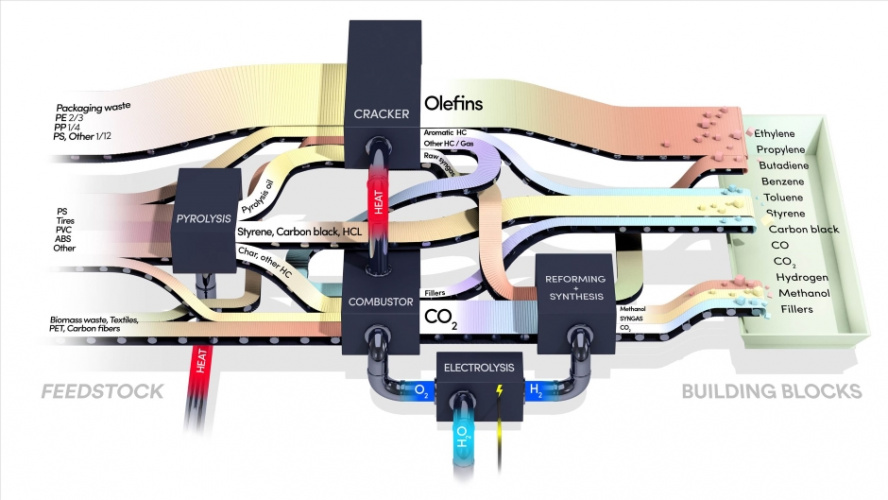
The process from a team at Chalmers University of Technology in Sweden breaks down any plastic waste to a molecular level. The resulting gases can then be transformed back into new plastics that are the same quality as the original.
According to Chalmers, the new process could transform plastic factories into recycling refineries, within the framework of their existing infrastructure.
Polymark gets a sense for plastics recycling
Recycling plant to generate profit from waste plastic
Plastics are a major environmental problem because they don’t break down and accumulate in ecosystems. The research team, led by Henrik Thunman, Professor of Energy Technology, sees this resilience as an asset. The fact that it does not degrade makes it possible for circular usage, creating value for used plastic and an economic incentive to collect it.
“We should not forget that plastic is a fantastic material - it gives us products that we could otherwise only dream of. The problem is that it is manufactured at such low cost, that it has been cheaper to produce new plastics from oil and fossil gas than from reusing plastic waste,” Thunman said in a statement.
Now, through experimenting with chemical recovery via steam cracking of plastic, the researchers have developed a process that turns used plastics into plastics of virgin quality.
“Through finding the right temperature – which is around 850 degrees Celsius – and the right heating rate and residence time, we have been able to demonstrate the proposed method at a scale where we turn 200kg of plastic waste an hour into a useful gas mixture. That can then be recycled at the molecular level to become new plastic materials of virgin quality,” said Henrik Thunman.
The experiments were carried out at the Chalmers Power Central facility in Gothenburg.
The current model for recycling plastic tends to follow a ‘waste hierarchy’, a scenario in which plastic is repeatedly degraded - to lower and lower quality - before finally being burned for energy recovery.
“Instead of this, we focused on capturing the carbon atoms from the collected plastic and using them to create new plastic of original quality – that is, back to the top of the waste hierarchy, creating real circularity.”
Today, brand new plastics are made by shattering fossil oil and gas fractions in a ‘cracker’ in petrochemical plants. Inside the cracker, building blocks consisting of simple molecules are created that can be combined in many different configurations, resulting in a variety of plastics. To do the same from collected plastics, new processes need to be developed.
“We are now moving on from the initial trials, which aimed to demonstrate the feasibility of the process, to focusing on developing more detailed understanding. This knowledge is needed to scale up the process from a few tonnes of plastic a day, to hundreds of tonnes. That is when it becomes commercially interesting,” Thunman said.
The process is said to be applicable to all types of plastic that result from waste systems, including those that have historically been stored in landfills or at sea.
What now makes it feasible to use collected and sorted plastics in large-scale petrochemical plants is that a sufficient volume of material is collected, so plants can theoretically maintain the same output. These plants require around 1-2 million tonnes of sorted plastic waste per year to convert to match the production levels they currently derive from oil and fossil gas.
Sweden's total amount of plastic waste in 2017 was around 1.6 million tonnes. Only around eight per cent of that was recycled to lower quality plastics. The Chalmers researchers see an opportunity to create a circular use of plastic and by-pass the need for oil and fossil gas to produce various high-quality plastics.
The research results have been published in Sustainable Materials and Technologies.





Glasgow trial explores AR cues for autonomous road safety
They've ploughed into a few vulnerable road users in the past. Making that less likely will make it spectacularly easy to stop the traffic for...